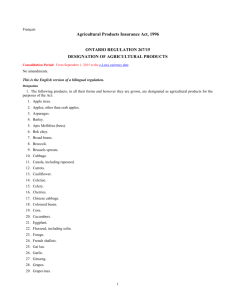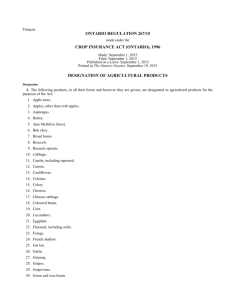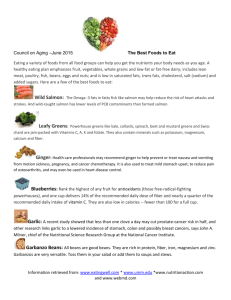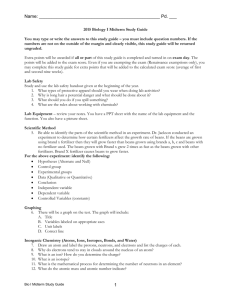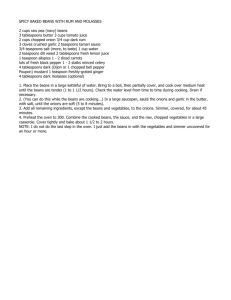November 2014 Beans: Pantry Staples, Nutrition Stars Beans are a
advertisement
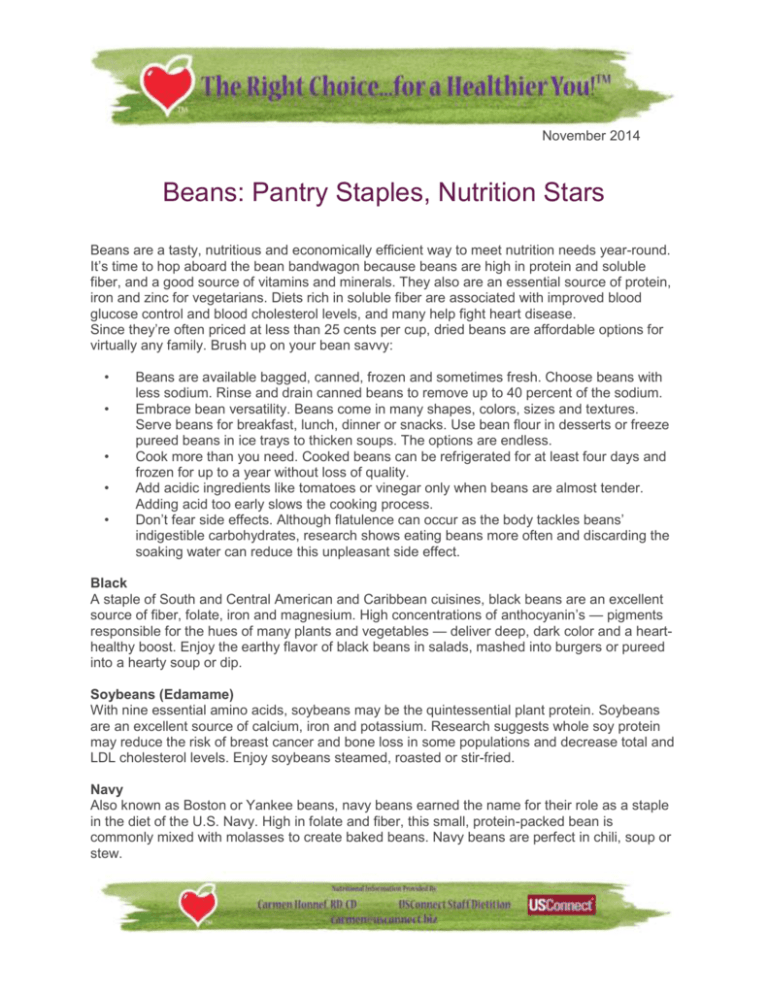
November 2014 Beans: Pantry Staples, Nutrition Stars Beans are a tasty, nutritious and economically efficient way to meet nutrition needs year-round. It’s time to hop aboard the bean bandwagon because beans are high in protein and soluble fiber, and a good source of vitamins and minerals. They also are an essential source of protein, iron and zinc for vegetarians. Diets rich in soluble fiber are associated with improved blood glucose control and blood cholesterol levels, and many help fight heart disease. Since they’re often priced at less than 25 cents per cup, dried beans are affordable options for virtually any family. Brush up on your bean savvy: • • • • • Beans are available bagged, canned, frozen and sometimes fresh. Choose beans with less sodium. Rinse and drain canned beans to remove up to 40 percent of the sodium. Embrace bean versatility. Beans come in many shapes, colors, sizes and textures. Serve beans for breakfast, lunch, dinner or snacks. Use bean flour in desserts or freeze pureed beans in ice trays to thicken soups. The options are endless. Cook more than you need. Cooked beans can be refrigerated for at least four days and frozen for up to a year without loss of quality. Add acidic ingredients like tomatoes or vinegar only when beans are almost tender. Adding acid too early slows the cooking process. Don’t fear side effects. Although flatulence can occur as the body tackles beans’ indigestible carbohydrates, research shows eating beans more often and discarding the soaking water can reduce this unpleasant side effect. Black A staple of South and Central American and Caribbean cuisines, black beans are an excellent source of fiber, folate, iron and magnesium. High concentrations of anthocyanin’s — pigments responsible for the hues of many plants and vegetables — deliver deep, dark color and a hearthealthy boost. Enjoy the earthy flavor of black beans in salads, mashed into burgers or pureed into a hearty soup or dip. Soybeans (Edamame) With nine essential amino acids, soybeans may be the quintessential plant protein. Soybeans are an excellent source of calcium, iron and potassium. Research suggests whole soy protein may reduce the risk of breast cancer and bone loss in some populations and decrease total and LDL cholesterol levels. Enjoy soybeans steamed, roasted or stir-fried. Navy Also known as Boston or Yankee beans, navy beans earned the name for their role as a staple in the diet of the U.S. Navy. High in folate and fiber, this small, protein-packed bean is commonly mixed with molasses to create baked beans. Navy beans are perfect in chili, soup or stew. Black-Eyed Peas Another Southern staple and symbol of good luck in the New Year, black-eyed peas are a good source of fiber, magnesium and zinc. Their creamy, mild flavor pairs well with tomatoes and leafy greens. Commonly eaten with rice, black-eyed peas can be creatively served in fritters, stews and salads. Lima Cultivated in Central America to supplement a protein-deficient diet, lima beans played a nutritious role in Aztec and Incan history and the creation of succotash. Available fresh, dry or frozen, lima beans are an excellent source of fiber and a potassium powerhouse. Simply stew lima beans or combine with sweet corn for succotash. Chickpea or Garbanzo Middle Eastern in origin, chickpeas are one of the most common legumes in the world. Chickpeas are high in fiber and folate, and provide potassium and magnesium. Enjoy the versatility of chickpeas in a creamy hummus, warm falafel, vegetable-rich salad or roasted into a crunchy, high-protein snack. Red Commonly substituted for kidney beans, red beans are smaller, softer and have a milder flavor. Red beans are an excellent source of fiber and a good source of iron. Red beans star in Creole red beans and rice and taste great in soups and salads. Great Northern Popular throughout North America, great northerns are an excellent source of fiber and folate. Common to the French stew cassoulet, the mild, delicate flavor of great northern make them perfect for white chili, soups and dips. Pinto Cultivated more than 5,000 years ago in ancient Peru, pinto beans are now a Southern staple and the most widely consumed bean in the U.S. Pintos are high in folate and fiber and a good source of potassium. Use pinto beans in stew, chili, vegetarian burgers or bean burritos. Fava Fava beans are part of ancient history with roots in the Middle East. Fava beans are an excellent source of fiber and folate and provide iron, magnesium and potassium. Unlike most of their (dry) bean brethren, fava beans are a spring vegetable commonly used fresh and eaten both raw and cooked. Kidney (Red and White) These kidney-shaped beans are high in fiber and folate and deliver robust flavor. Armed with a thicker skin, kidney beans hold their shape in dishes with longer cook times, such as chili con carne, but are also a popular salad bar ingredient. A bit milder, white kidney beans (also called cannellini) are often used in Italian salads and sauces. Source: www.eatright.org


